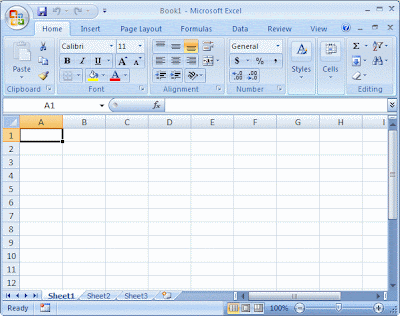Calculate the age based on the Date of Birth and another date (default is the current date).
![]()
Dates should be entered in the US format mm/dd/yyyy, using four digits for the year.
http://www-users.med.cornell.edu/~spon/picu/calc/agecalc.htm
M S Office, M S Excel, M S Power Point, M S Dos, Outlook Express, M S Access, Internet Asked your question Linux Web Hosting in India
Calculate the age based on the Date of Birth and another date (default is the current date).
![]()
Dates should be entered in the US format mm/dd/yyyy, using four digits for the year.
http://www-users.med.cornell.edu/~spon/picu/calc/agecalc.htm
Excel considers dates as numbers. Each date is assigned a unique serial number. For example, the 27th September 1999 was date serial 36430. Fortunately, you don't need to know this but the fact that all dates have numerical values can be very useful. Windows uses the 1900 date system in which 1st January 1900 is date serial 1, 2nd January 1900 is date serial 2 and so on.
 When you type a date into a cell, Excel shows you a date but is thinking of a number.
When you type a date into a cell, Excel shows you a date but is thinking of a number.
To find out the serial number of a date, select the cell containing the date then go to Format > Cells. Go to the Number tab and click General in the Category list. The date's serial number will appear in the Sample box on the right.
You can make use of these numbers in all sorts of ways. You can add a number to a date to give a date that number of days later (or subtract a number to get a date before), you can take one date from another to find out how many days in between. There are lots of ready-made date functions too.
A person's age is the amount of time since they were born (I know you know that but the computer doesn't, and we have to start thinking like the computer). So, all we have to do is put today's date in one cell and the person's date of birth in another cell, then take their date of birth away from today and you get their age - right? Well, sort of... you get a number. Because you took a date serial from another date serial you get the number of days in between*[note]. It looks like this...
 In this example the formula in cell A3 is:
In this example the formula in cell A3 is:
=A1-A2
We need to convert this number of days into a number of years. Most years have 365 days but every fourth year has 366 days. So the average number of years is 365.25. Let's modify our formula...
 In this example the formula in cell A3 is:
In this example the formula in cell A3 is:
=(A1-A2)/365.25
Note the brackets around the first part of the formula. Brackets mean "Work out this bit first...". I've used them here to stop Excel trying to divide A2 by 365.25 before taking it away from A1. Excel formulas work do any multiplying and dividing before it does adding and subtracting, but anything in brackets gets done first.
Now we can see a number of years, but it's still not quite right. We are getting an accurate result but we don't really want to see the fraction. As a last refinement we'll wrap the whole thing inside an INT() function to give us a whole number (an integer). This is better than changing the number of decimal places displayed, which would risk some numbers being rounded up and giving an incorrect result. Here's the finished result...
 In this example the formula in cell A3 is:
In this example the formula in cell A3 is:
=INT((A1-A2)/365.25)

